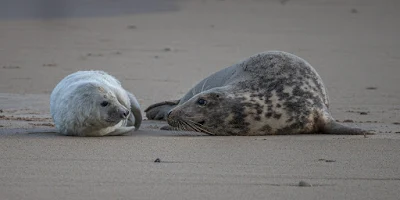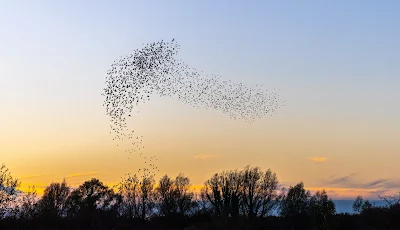Temperatures had dropped to minus 3 degrees and there was a mist. We ventured to Hardwick Wood, an ancient woodland full of magic. The soft mud had hardened with the chill and the pond was visible. The wood looked beautiful in the mist. Most photographers would understand the frustration of not having a lens they felt would be wonderful to use. I missed my macro lens. On the way many trees branches hung in the mist showing the shape of the tree's skeleton. I took many images with my 24 - 70 mm lens
Thursday, 31 December 2020
Friday, 25 December 2020
Christmas 2020 - A cold Christmas Day in Norfolk
Christmas has been very different for everyone this year and many have spent it alone as I did. I decided to make a sandwich and a flask of tea and set off to Wixham on the Norfolk coast. The SatNav took me through Winterton and Horsey before reaching Wixham when the heavens opened and heavy rain descended. It was a chance to eat the sandwich before walking to the beach. It was cold and there were a few dog-walkers and families. I saw one cow and pup seal and a bull hanging around in wait. Several young bulls tried to swim ashore but the bull on the shore soon made them unwelcome. I had hoped for some sanderlings, and a variety of gulls but I had to be satisfied with a Herring Gull who was standing on one leg near the seals looking like an opportunist.
I was lucky to have a glimpse of Horsey Windpump in the sunlight before the rain. The present structure was built in 1912 on the foundations of the 18th-century Horsey Black Mill. The windpump was working until it was struck by lightning in 1943. It was acquired by the National Trust in 1948 from the Buxton Family who still manage the Horsey estate, emphasising nature conservation. Because of this, the estate has become an internationally important wildlife site. The windpump looked in great condition after a resent refurb.
Thursday, 17 December 2020
Viroconium Cornoviorum
Viroconium or Uriconium, formally Viroconium Cornoviorum, was a Roman town, one corner of which is now occupied by Wroxeter, a small village in Shropshire, England, about 5 miles (8.0 km) east-south-east of Shrewsbury. At its peak, Viroconium is estimated to have been the 4th-largest Roman settlement in Britain, a civitas with a population of more than 15,000. The settlement probably lasted until the end of the 7th century or the beginning of the 8th. Extensive remains can still be seen.
I stopped on my way home as the sun was coming up and captured this image.
Monday, 7 December 2020
Shingle Street in the Fog
It was cold and foggy but the forecast stressed fog would lift at the coast so off we went! The beach was inhabited by a few fishermen earnestly trying to catch Whiting but not having a great deal of luck. The sun strained through the fog occasionally casting light on the sea. Someone came out of one of the cottages and raised the Union Jack on the flag pole and a little later someone else raised another blue and white flag.
Wednesday, 11 November 2020
Starling Murmurations at RSPB Fowlmere
Scientists believe that murmurations offer safety in numbers where predators like Peregrine Falcons are attracted by the sheer number of birds. Predators find it difficult to target one bird in the middle of a hypnotising flock of thousands. Murmuration happens when the birds start to roost and this happens from September in some places and as late as the end of November in other places. Starlings are sociable birds throughout the year and breed April to July.
Research into falling numbers of starlings revealed the number has dropped by 80% since 1979 in the UK. The species is threatened globally. These birds can fly for miles to get to their specific roost site. Some are resident in the UK but the majority are migratory birds coming from Europe. More will appear in the UK if there is a cold winter in Europe and if there is a good Easterly wind to assist them flying here. They prefer to roost in reed beds, conifers, piers, trees and hedges.
The patterns these birds make are amazing and so beautiful. They fly in swooping, intricately coordinated patterns throughout the sky. Starlings pay attention to a fixed number of their neighbours in the flock, regardless of flock density, it is exactly seven. This interaction with neighbours optimises the balance between the group cohesiveness and individual effort. These groups of seven are part of the dynamic system in which the parts combine to make a whole with emergent properties and murmuration results.
These images were taken at RSPB Fowlmere (SGA8 7SH). This designation nature reserve is a 39.9 hectare biologically Site of Special Scientific interest. the watercress beds are now reed beds. At the moment there is a one-way route round the reserve to accommodate the prescribed Government Covid standards
I watched the murmuration two night in a row and the displays were very different. The first evening was brighter with a pleasant sunset and the second a dark and dismal evening. On the first evening groups of birds came in from different directions and joined the swath of birds forming patterns before suddenly dropping down to roost.The second evening the light was flat and it was much darker so the process was noticeably shorter and the birds flew low before roosting. The murmuration patterns were noticeable different, the second was a simple formation and they swirled at low level.
Shakespeare mentioned starlings in Henry IV Part 1.
"Nay, I'll have a starling shall be taught to speak nothing but Mortimer, and give it to him to keep his anger still in motion."
In 1890, a German immigrant Eugine Schieffelin, a passionate Shakespeare follower decided to release 60 starlings in New York's Central Park. He hoped they would start breeding however, there was a population explosion.
Murmuration is a stunning sight and one can hear the noise of their wings. The last image is taken on the second viewing.
Sunday, 25 October 2020
Ashby De La Zouch Castle
This castle became a popular place to visit in the 19th Century when it was mentioned in Walter Scott's novel Ivanho (1819).
The castle was an important royalist base during the Civil War. William Lord Hastings, a political figure was a supporter of King Edward IV and the Yorkists against the Lancastrians in the Wars of the Roses. Ashby de la Zouch was the creation of William Lord Hastings who was licensed by Edward IV to fortify this site along with Kirby Muxloe, a courtyard residence with a moat. Presently it is closed to visiters so sadly I could not visit. Hastings was also an artistic patron and his wife's sister is depicted in the central panel of an altarpiece by Hans Memling (d1494).
Hastings was executed for treason after a council meeting in the Tower June 1483, a source of consternation. When Richard ordered the execution of Lord Hastings as the Council meeting descended into chaos, he was labelled a murderer and that particular piece of mud has stuck ever since. Annette Carson has published a scholarly book Richard Duke of Gloucester as Lord Protector and High Constable of England in which she explains the technical issue of the time. Shakespeare mentions the event in Richard III.
The castle garden was fascinating the rectangular garden was divided by a walkway One half is a broad-level lawn and the other subdivided by high banks and interlocking spurs. The spurs may be evoked contemporary bastion fortifications for artillery.
Here are a few images of the ruin and some illustration of the brickwork used to build the towers.























































